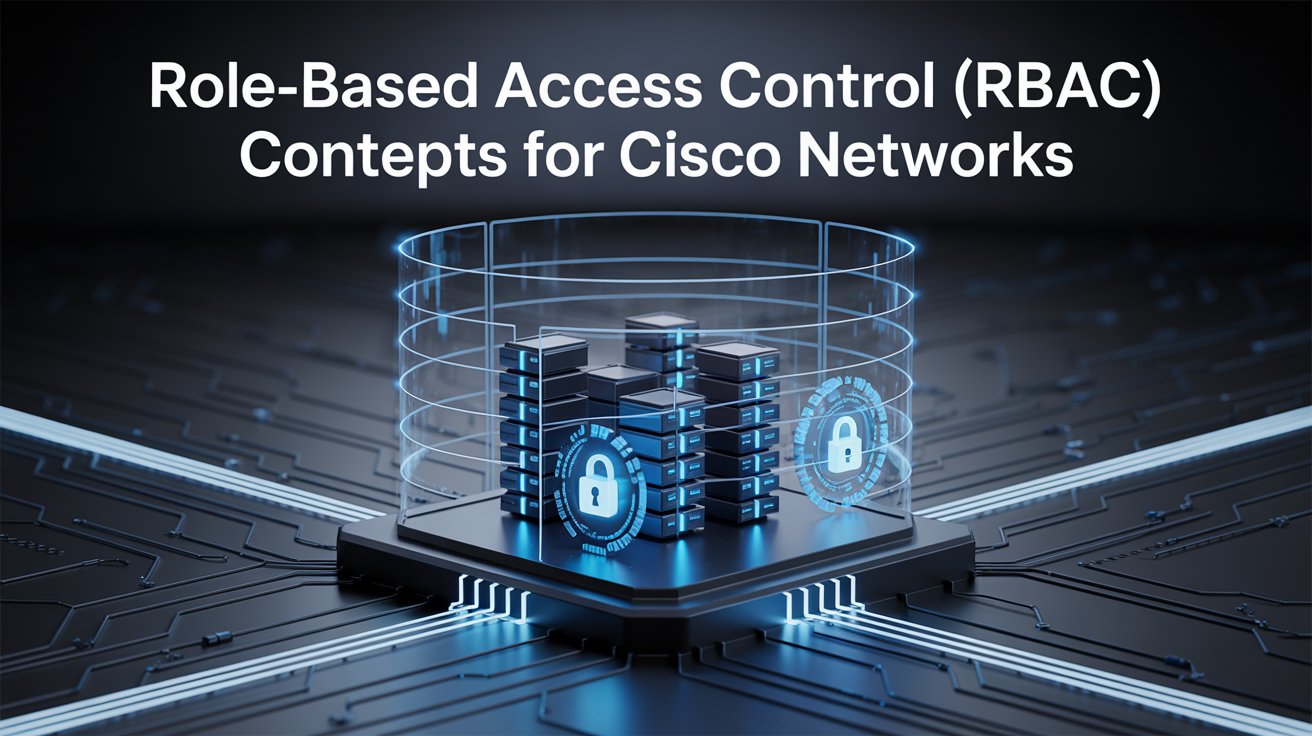Role-Based Access Control (RBAC) is an effective access management model that limits system access according to the specific roles assigned to users within an organization. As networks become larger and more complex, RBAC offers a scalable and structured way to define who can access what, when, and how. It streamlines permission management, enhances compliance, and strengthens overall network security.
Cisco’s architecture deeply incorporates RBAC principles across its platforms, making it a vital component of modern network operations. If you want to prepare for CCNP Security training, understanding RBAC is not only helpful for certification but also critical for implementing real-world security solutions in Cisco enterprise networks.
What Is Role-Based Access Control (RBAC)?
RBAC is a security model that controls system access by assigning permissions based on a user’s role within the organization. Rather than assigning permissions to individual users one by one, RBAC allows administrators to define permissions for a role and then assign that role to multiple users. A “role” reflects job functions such as “Network Engineer,” “Security Analyst,” or “Helpdesk Operator.”
Each role carries a predefined set of permissions that determine the type of access the user has—such as read-only access, configuration ability, or monitoring rights.
For example:
- Network Admin Role: Full CLI/GUI access to routers, firewalls, and switch configurations.
- Security Auditor Role: Read-only access to logs, reports, and policy verification tools.
- Guest Role: Limited access to specific VLANs or internet services only.
This abstraction reduces the complexity of access control, enhances compliance efforts, and makes policy enforcement far more scalable.
RBAC Across Cisco Platforms: How It Works
Cisco integrates RBAC into several of its platforms and security tools, each designed to manage role assignments and permissions according to network size, policy requirements, and management architecture.
1. ISE, or Cisco Identity Services Engine
Cisco ISE is a policy-based access control platform that uses RBAC extensively to enforce dynamic access decisions.
Key Features:
- Role assignments based on identity, endpoint posture, time of day, or location.
- Use of Authorization Policies to assign VLANs, ACLs, or downloadable ACLs (dACLs).
- Integration with Active Directory, LDAP, or SAML for identity-based policy decisions.
Example:
A sales user logging in from a corporate laptop during business hours gets full access to sales applications, while the same user on a personal device or from a remote location gets restricted access.
2. Cisco Firepower Threat Defense (FTD) and FMC
RBAC in Firepower Management Center (FMC) enables security teams to delegate responsibilities while maintaining control over critical firewall operations.
Role Examples in FMC:
- Security Analyst: Can view events, dashboards, and reports only.
- Policy Admin: Can edit firewall policies but cannot modify system configurations.
- Network Admin: Has full access including device registration, license management, and health monitoring.
Roles in FMC are hierarchical and can be custom-defined, allowing fine-tuned control of access and responsibility across security operations teams.
3. Cisco DNA Center
DNA Center is Cisco’s network automation and assurance platform. RBAC here helps manage who can access which sections of the GUI and which devices or sites.
Use Case Example:
- A campus IT team can be given privileges to only their campus devices and configurations.
- A global admin maintains visibility and access across all sites.
Roles in DNA Center can also be combined with scopes, which define the geographical or logical boundaries the user can manage.
How RBAC Interacts with Cisco AAA (TACACS+/RADIUS)
RBAC doesn’t operate in isolation—it’s part of Cisco’s broader AAA (Authentication, Authorization, and Accounting) architecture.
- Authentication: Ensures users are who they say they are.
- Authorization (RBAC): Determines what authenticated users can do.
- Accounting records user activities to support auditing and ensure compliance with security policies.
Cisco uses TACACS+ for admin access to devices and RADIUS for network access, often with ISE managing the backend identity policies. Combining AAA with RBAC ensures centralized, role-aware access decisions across wired, wireless, and VPN access scenarios.
Benefits of Implementing RBAC in Cisco Networks
1. Centralized Access Management
○ Reduces administrative overhead by eliminating the need for per-user permission configurations.
2. Improved Security Posture
○ Enforces the principle of least privilege, minimizing insider threats and accidental changes.
3. Audit & Compliance Readiness
○ Clear role definitions and logs streamline regulatory compliance with PCI-DSS, HIPAA, and ISO 27001.
4. Operational Efficiency
○ expedites the onboarding and offboarding process, particularly in big, multi-location businesses.
5. Separation of Duties
○ Reduces risk by dividing tasks between users based on roles (e.g., network admin ≠ firewall admin).
Best Practices for RBAC in Cisco Environments
- Clearly document every role by specifying the permissions and restrictions associated with each
- Review Regularly: Audit roles and access periodically to reflect changing job responsibilities.
- Use Context-Aware Policies in ISE: Base access decisions not just on identity but also on device posture, location, and threat level.
- Start with Least Privilege: Begin with minimum access and grant more only as needed.
- Log Everything: Use syslog, SNMP traps, or Cisco SecureX for complete visibility into role-based access events.
Real-World Scenario: Using RBAC for Remote Workforce
Situation: A company needs to provide remote VPN access to employees and contractors during off-site work.
Solution:
- Define roles in Cisco ISE:
○ Employee: Access to internal applications and cloud apps.
○ Contractor: Internet-only access with restricted VLAN segmentation.
- Assign access dynamically based on user identity, posture assessment, and device type.
- Integrate RBAC with AnyConnect and Firepower policies to ensure seamless, policy-driven access control.
Conclusion
Role-Based Access Control (RBAC) is vital for maintaining a secure and scalable network environment, especially as organizations transition to hybrid infrastructures and expand
operations. With Cisco’s robust implementation of RBAC across platforms like ISE, FMC, and DNA Center, network administrators can enforce precise, policy-driven access that aligns with business roles and security objectives. This method improves transparency, streamlines administration, and maintains steady adherence to regulatory requirements.
To design and implement such secure architectures, professionals must master RBAC concepts thoroughly. Enrolling in CCNP Security programs helps build the advanced skills required to configure, troubleshoot, and optimize Cisco’s role-based access solutions in enterprise networks.

















Leave a comment